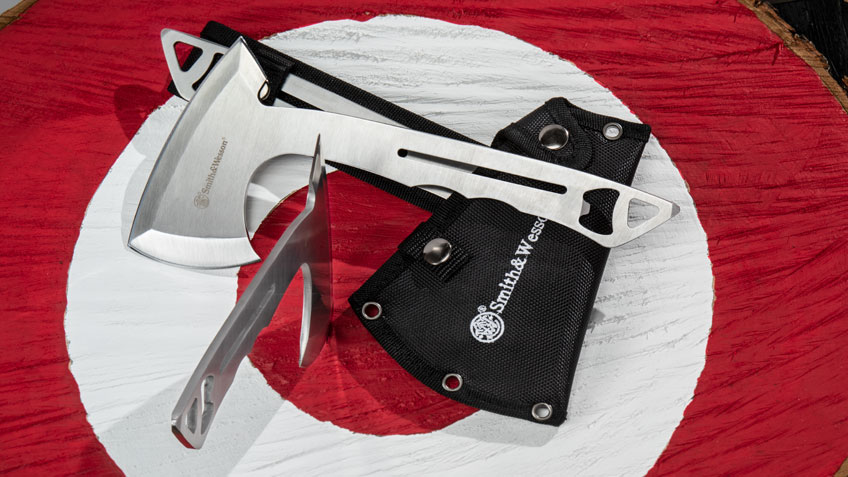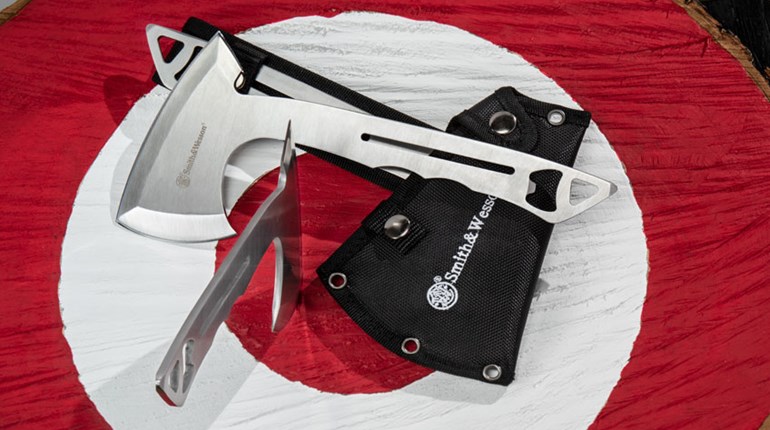
Ax throwing is growing, rapidly; ESPN televised the national championship and clubs are appearing in unexpected places. Axes and tomahawks have gone mainstream, and many of the industry's finest include them in their lineup.
“Axes and tomahawks are part of our DNA, especially the tomahawk,” explained Chris Cashbaugh, senior marketing director of product line management for SOG Specialty Knives & Tools. “Our tomahawk design is modeled after the design used by MACV-SOG in Vietnam. We took that original design and modernized it with current materials and manufacturing techniques that were not available 40 to 50 years ago. In doing so, we created a new category of tool that can be used by various personnel for a wide variety of tasks.”
“CRKT launched our first tomahawks in 2013 with the Chogan and Kangee models,” said Doug Flagg, vice president of marketing & innovation for CRKT. “Back then, as we continue to do now, we were responding to market conditions as consumers were looking for innovative, durable axes to complement their outdoor pursuits. As a brand, we’ve seen solid success within the category over the years and it continues to be an important part of our business today.”
There’s more to the growth than just rugged outdoor pursuits and survival, though. Not to split hairs, but people are trading gentile darts for big-bore axes in metroplexes known more for mourning the death of a single tree than cutting-edge sports.
Washington, DC, is the latest to join that growing list, with the January grand opening of Kick Axe Throwing’s third club. The company’s locations in Brooklyn and Philadelphia are also thriving and other locations are in the works. Staff walks beginners through the basics and safety procedures—particularly important in the nation’s capital, where politicians like to bury their hatchets.
Ginger Flesher-Sonnier, owner/CEO of the Kick Axe Throwing Chain, launched the business in 2017. “It is hugely satisfying when the axe sticks the target and your friends all cheer,” she explained when asked about the sport’s popularity. “It makes for a fun memorable night out. We have Axe Pros [who] engage everyone in competitive games to keep people engaged and pumped up.”
“There are competitions that start at the local league level and culminate in major tournaments,” she said. “The two major leagues are the World Axe Throwing League (WATL) and the National Axe Throwing Federation. This year’s WATL National Championship was televised on ESPN. We run our own local leagues and are looking at hosting our own Kick Axe Open Tournament in the future.”
Maine’s The Axe Pit doesn’t quite have the same big-city population from which to draw, but business has boomed since opening in 2017. “The idea started off as just something fun to do, but as it rapidly grew into something more popular and successful we found that it could be its own business,” said Connor Winn, general manager and co-owner of The Axe Pit. “And a very successful one at that.”
As for the preconception that axe throwing has rigid physical requirements, he explains, “It is a skillful activity that is not overly physical, but not mundane either…it can be relaxing or intense, requiring both a state of Zen and a sharp, focused mind.”
If you’re already honing up for the championship, competition is fierce and each carry a sharp object. “Each year we have participation increase by thousands of competitors,” said Evan Walters, commissioner of the World Axe Throwing League—formed in 2017. “When we started, we had only a few hundred and now we’re averaging about 12,000.”
There’s more to it than trophies, though. “Axe throwing is a great activity for anyone who can throw,” Walters said. “We have kids, elderly and handicapped throwers [who] all excel at it. The other great part of this activity and sport is how strong and diverse the community is. Everyone can leave the real world behind for an hour or two and just come together as a family and enjoy throwing things.”

































